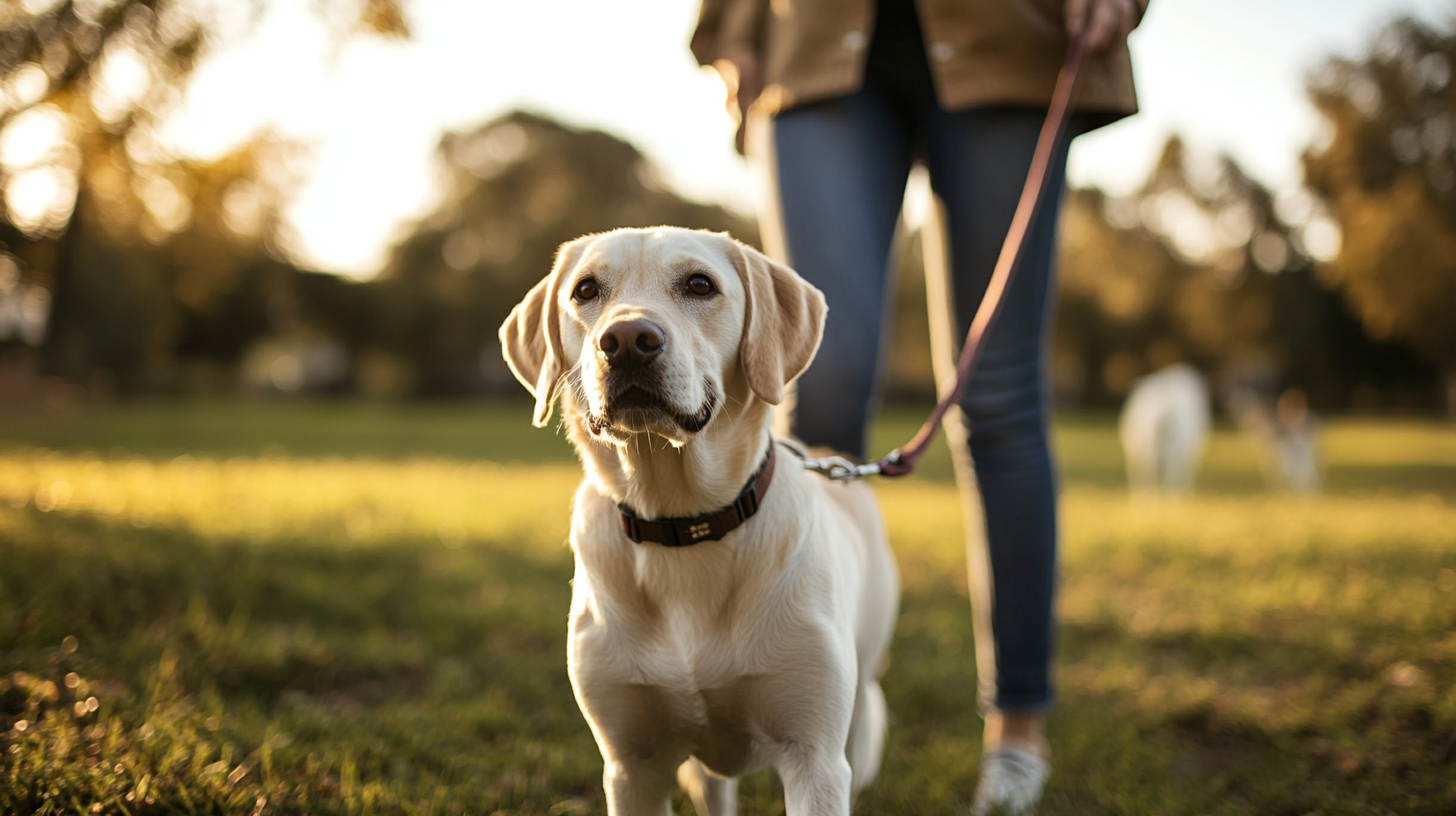Living with a reactive dog can be challenging, but with the right management tactics, you can help your furry friend navigate the world more comfortably.
This article explores seven effective strategies to manage reactive behavior in dogs, providing you with practical tools to create a safer, calmer environment for your pet.
Understanding Canine Reactivity
Before diving into management tactics, it’s crucial to understand what reactivity in dogs means.
Reactivity refers to an exaggerated response to certain stimuli, often manifesting as barking, lunging, or growling.
This behavior is usually rooted in fear, anxiety, or overexcitement, rather than aggression.
Recognizing the underlying causes of your dog’s reactivity is the first step towards effective management.
Now, let’s explore the seven management tactics that can help you and your reactive dog.
1. Create a Safe Space
Every reactive dog needs a designated safe space where they can retreat and feel secure.
This area should be a quiet, comfortable spot in your home, away from windows and doors.
Setting Up the Safe Space
Use a crate, a corner of a room, or even a whole room as your dog’s safe haven.
Furnish the space with comfortable bedding, favorite toys, and items that carry your scent.
Using the Safe Space Effectively
Encourage your dog to use this space during potentially stressful times, like when visitors come over.
Never force your dog into the safe space; it should always be a positive, voluntary retreat.
2. Implement Barrier Management
Barrier management involves creating physical or visual barriers between your dog and their triggers.
This tactic can significantly reduce stress and prevent reactive outbursts.
Types of Barriers
Use fences, gates, or even strategically placed furniture to create physical boundaries.
Consider using privacy film on windows to block your dog’s view of outdoor triggers.
Gradual Exposure
While using barriers, gradually expose your dog to triggers from a safe distance to build tolerance.
Always pair exposure with positive experiences to create new, positive associations.
3. Master the Art of Distraction
Distraction techniques can redirect your dog’s attention away from potential triggers.
This tactic is especially useful during walks or in situations where you can’t avoid triggers entirely.
Effective Distraction Tools
Use high-value treats, favorite toys, or engaging games to capture your dog’s attention.
Practice attention exercises at home to strengthen your dog’s focus on you.
Timing is Key
Aim to distract your dog before they become fully reactive for best results.
Be prepared with distraction tools whenever you’re in potentially triggering situations.
4. Utilize Calming Aids
Various calming aids can help reduce your dog’s overall stress and anxiety levels.
These tools can be particularly helpful in managing reactivity in challenging situations.
Types of Calming Aids
Consider using ThunderShirts, calming collars, or pheromone diffusers to promote relaxation.
Some dogs respond well to calming music or white noise machines.
Proper Introduction
Introduce calming aids gradually and in positive situations to create good associations.
Consult with your veterinarian before using any new products, especially if they contain active ingredients.
5. Practice Avoidance When Necessary
Sometimes, the best management tactic is simply avoiding known triggers when possible.
Avoidance can prevent stress and allow you to work on training in more controlled environments.
Smart Avoidance Strategies
Plan walks during quieter times of the day to minimize encounters with triggers.
Use alternative routes or entrances if certain areas consistently cause reactivity.
Balancing Avoidance and Exposure
While avoidance can be helpful, it’s important to balance it with controlled exposure for long-term improvement.
Work with a professional trainer to develop a plan that gradually exposes your dog to triggers safely.
6. Implement Leash Management Techniques
Proper leash handling can significantly impact your dog’s reactivity during walks.
Learn and practice leash management techniques to maintain control and reduce stress.
Leash Handling Tips
Use a front-clip harness or head halter for better control without causing discomfort.
Practice loose-leash walking in low-stress environments to build good habits.
The Power of U-Turns
Master the quick U-turn to swiftly move away from approaching triggers.
Pair U-turns with rewards to create a positive association with moving away from stressors.
7. Establish a Consistent Routine
A predictable daily routine can help reduce anxiety and reactivity in dogs.
Consistency in your dog’s schedule provides a sense of security and control.
Creating a Routine
Establish regular times for meals, walks, play, and rest.
Stick to the routine as much as possible, even on weekends or during holidays.
Gradual Changes
When changes to the routine are necessary, introduce them gradually to minimize stress.
Always associate changes with positive experiences to help your dog adapt more easily.
The Importance of Professional Help
While these management tactics can be highly effective, working with a professional is often crucial for long-term success.
A certified dog trainer or behaviorist can provide personalized strategies and support for your reactive dog.
Choosing a Professional
Look for trainers who use positive reinforcement methods and have experience with reactive dogs.
Consider asking your veterinarian for recommendations to find qualified professionals in your area.
A Call to Action: Share Knowledge, Save Lives
Managing a reactive dog requires patience, consistency, and knowledge.
By sharing this article on Facebook, you can help spread awareness about effective management tactics for reactive dogs.
Your share could provide much-needed support to fellow dog owners struggling with reactivity issues.
Remember, proper management not only improves the quality of life for reactive dogs but also enhances safety for everyone involved.
Let’s work together to create a community that understands and supports reactive dogs and their owners.
By sharing this information, you’re contributing to the well-being of dogs everywhere and helping to build a more compassionate world for our canine companions.
SHARE now with your friends!
- Hero Farm Dog Survives Epic Battle with Coyote Pack - December 9, 2024
- The 10-Minute Bedtime Routine That Changed My Dog’s Sleep Forever - November 29, 2024
- Creating a Safe Space for Nervous Pets: Your Guide to Pet-Friendly Havens - November 25, 2024

